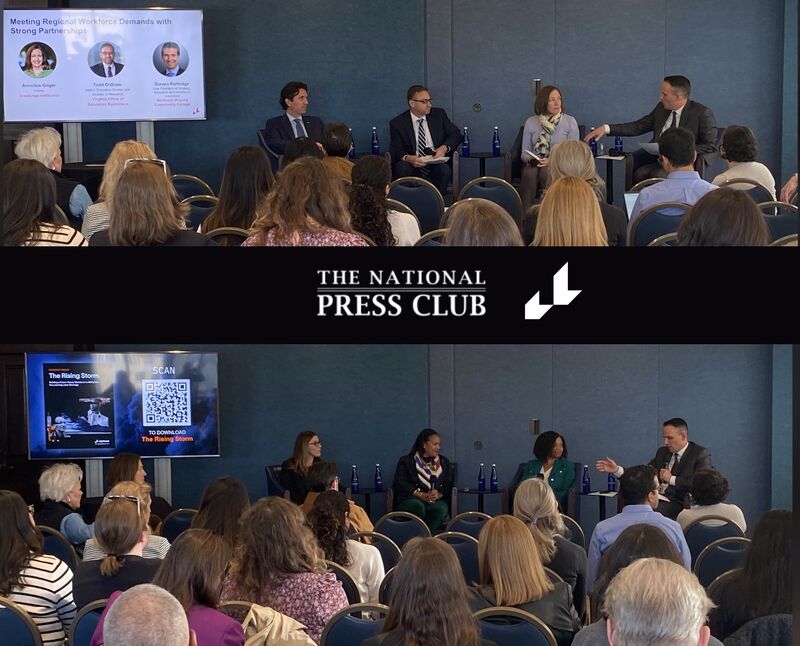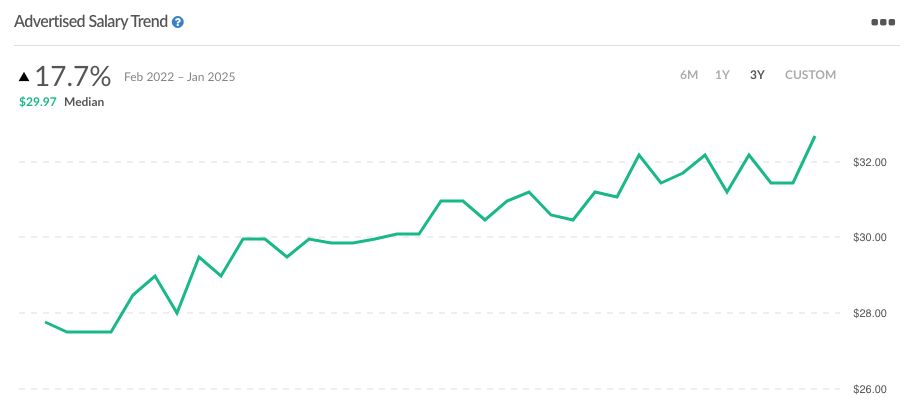This moment in the labor market, for all the disruption and uncertainty, presents new opportunities for every part of the workforce ecosystem.
That was the consensus of some of the nation’s top workforce development leaders in October when we convened two expert panels in DC at the National Press Club to discuss the implications of the The Rising Storm.

The Lightcast report lays out how the American labor market is undergoing a structural shift. The days of a talent-abundant, Baby Boomer-driven job market are all but gone as older workers retire. And while we grapple with fewer people to do the work, we’re just starting to feels the effects of generative AI on how work is done.
Is this double disruption creating challenges? Yes. Real ones.
Is it opening up even more opportunity? I believe so.
One regional example: Last month the New York Times documented how the AI boom is leading to a surge in data center construction in central Washington, which is driving up demand and wages for electricians. From the article, echoing excellent metro-level research from Mark Muro, Senior Fellow and Policy Director, and team at Brookings: “A.I. is shaping up to be the kind of economy-bending force that inevitably creates winners and losers."
The AI boom in this case is also colliding with and magnifying the trades gap, the shortage of skilled trades workers that will only become more pronounced as the demographic drought worsens. In this way, the AI and demographic disruptions are inextricably linked — a point that Brent Orrell, Senior Fellow at American Enterprise Institute, snapped into focus for me while we were discussing this NYT article.
I understand some healthy skepticism when talk of the skills gap comes up. But the trades gap is very real. There’s a reason Home Depot highlights the huge need for tradespeople at the end of its commercials during football games and Mike Rowe’s work is still going strong.
Electricians are one of the headliners of the trades gap. A few relevant data points, per Lightcast:
👉 Advertised wages in job postings for electricians have risen 18% the last three years.
👉 21% of the 850K electricians currently employed in the US are 55 years old and above.
👉 Maine, New Jersey, and Florida have the oldest electrician labor forces. In each, 25% of the current workforce is 55+.
👉 Utah, Idaho, North Dakota, and Colorado have the youngest electrician labor forces. All range from 14-16% that are 55+.
👉 Wyoming, North Dakota, and Utah have the highest concentration of electricians in the US.

